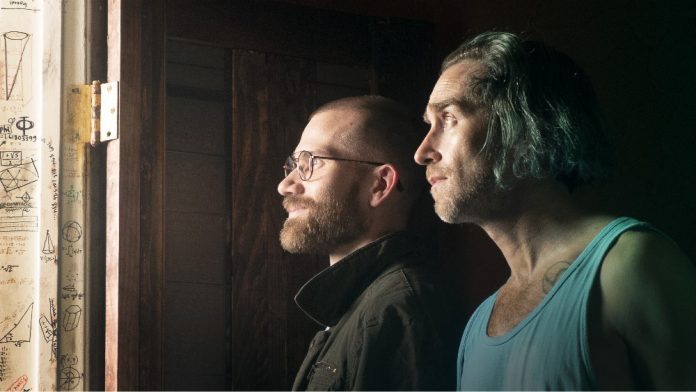For many years, filmmakers Justin Benson and Aaron Moorhead were known within genre circles for the DIY aesthetic of their early indie films Resolution, Spring, and The Endless (all of which are connected in varying ways).
Benson and Moorhead’s 2019 movie, Synchronic, which premiered at the Toronto International Film Festival, saw the duo upping their budget, and production values by bringing in known actors Anthony Mackie and Jamie Dornan, but it had the unfortunate onus of being released during a pandemic before theaters in New York and L.A. had reopened.
More recently, Benson and Moorhead directed a few episodes of Marvel’s Moon Knight, which continued to amplify their Hollywood presence and led to them being brought on as directors for Season 2 of Loki.
In between those high-profile comic book series, the duo debuted their latest feature film, Something in the Dirt, at this year’s Sundance Film Festival. Not only did they write, direct produce, and star in the sci-fi film, but they also handled cinematography and editing duties, returning them to the DIY ethos of their earlier movies.
Trying to relay the plot of Someting in the Dirt might be a fool’s errand, but essentially, Benson and Moorhead play Levi and John, new neighbors in an L.A. apartment complex where they begin to experience paranormal phenomena that they hope to capture on film for a documentary. Their fast friendship starts becoming frayed as they dive deeper into the mysterious occurrences, which start to become quite dangerous.
Above the Line ventured out into the wilds of Williamsburg, Brooklyn, where Benson and Moorhead were presenting Something in the Dirt to a theater full of rabid genre fans at the Brooklyn Horror Film Festival. We sat down with them outside the Nitehawk Cinema in Williamsburg for the following conversation:
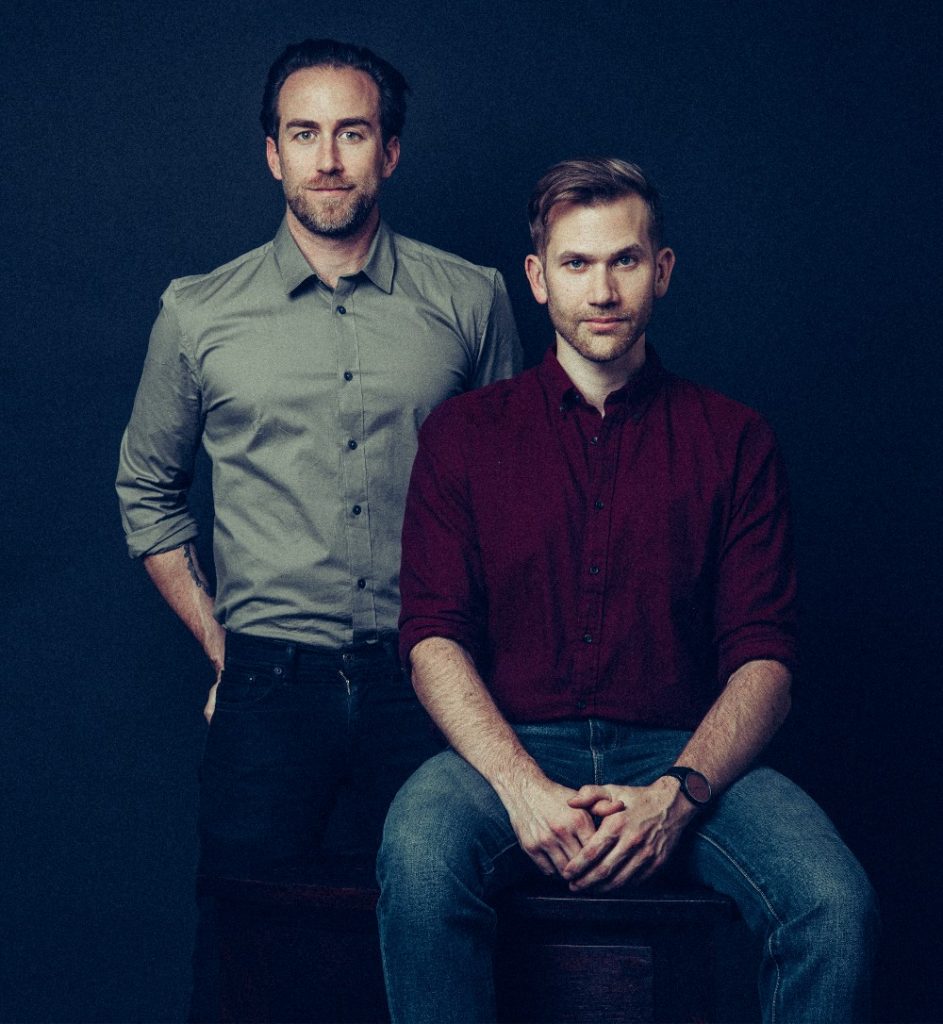
Above the Line: In the Q&A earlier, you mentioned that this film had been gestating since before the pandemic. You two would be the perfect duo to make a pandemic movie given that you act and direct yourselves and don’t need a huge cast or crew. Was the decision to actually make this movie related at all to the pandemic?
Aaron Moorhead: Our first movie, Resolution, easily could have been a pandemic movie, but we were just desperate to make a movie that wouldn’t be known as a “pandemic movie.” Honestly, if there weren’t any behind-the-scenes on it, people just hopefully wouldn’t even know. It would just feel like a regular movie that we would have made otherwise, and it’s not responding to any kind of external circumstances. Another good example is [that] since making the movie, more conspiracy theories have pervaded the world. But while we were making it, we were talking about The X-Files [and] AM radio in the ’90s. We were not talking about the things that have started to pull apart a lot of families nowadays.
ATL: Something in the Dirt incorporates some of your old ideas for a haunted house movie that you had been pitching in meetings. How long ago are we talking about?
Justin Benson: I guess you could say the movie has been in development and was conceived of, like, 13 years ago or something like that? Not this very specific premise, but a lot of the meat of the movie — a lot of the ideas — are things that we’ve talked about since we met. A lot of it’s inspired, too, by Alan Moore interviews, like interviews with Alan Moore where he just says something fascinating, [and] then we’ll start talking about it, and spin off. The book House of Leaves was something that we always talked about for years, like, ‘What if we could make that movie? How would we do it?’ And we, obviously, never have, but now, it’s clearly a very different story, but [Something in the Dirt] has some of the spirit of it, in a way. [To Aaron] What were some other inspirations and touching points for the last 13 years?
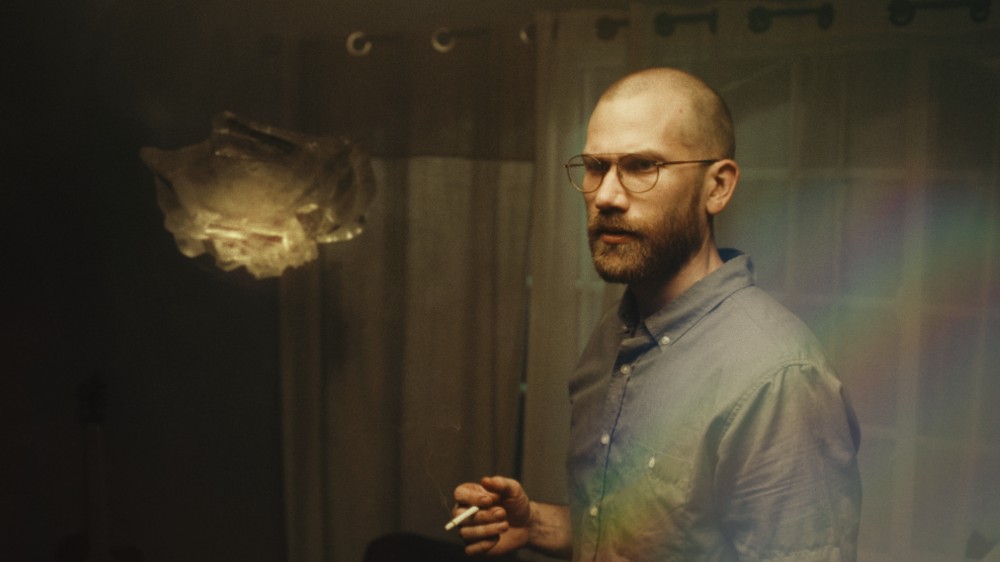
Moorhead: One that I just love, when we realized it was an inspiration, was the Museum of Jurassic Technology, which is this place in Los Angeles. It’s kind of a small museum, but it’s five stories tall, and there’s not really any indication in the museum what it really is. You start figuring it out as you go up the flights, because the exhibits are kind of bizarre, and you start realizing that it’s fake. They don’t tell you that it’s fake, because the exhibits are kind of whimsical, but sometimes it’s just like, ‘Here’s a hubcap,’ and you don’t know why you’re being shown it. So there’s this strange, Lovecraftian, multi-dimensional feeling to being in this museum, but it never really tells you what it is. You suspect that half of the things in the museum are completely fabricated. I mean, they’re all technically fabricated, but in terms of like, ‘Oh, this is the taxidermy of an unknown creature,’ you realize that’s just completely fabricated, and that’s the spirit of our movie, where you just don’t quite know what’s supposed to be real and what’s not. Which is also funny, because, of course, it’s a complete fiction, but within the world of the story, there’s something that is an even more fictitious nature than that.
ATL: I have to ask because I’m really curious now — the home movies that we see, are those actually you guys as kids in your own home movies?
Moorhead: Yeah, that’s us as children.
Benson: Aaron had found some old Hi-8 tapes from his family stash from over the years, shooting home videos, and he had them digitized. He had this really intense experience going through the videos, [he was] very emotional, [seeing] things he had never seen before of his family. I’ll let you get into more of the specifics of that, but then he inspired me. He’s like, ‘If you have anything like this, you’ve got to do it. Get those tapes digitized, take a look.’ So, I went and did the same thing. We both had these separate experiences. You can talk about yours first.
Moorhead: I was making a memorial video for my grandma, so I had [told] everyone in my extended family, ‘Send me everything that you have.’ And so I was going through, essentially, my family — almost exclusively in the early ’90s, [which is] kind of when those tapes ran out — [and] there was this one moment in particular… it was all highly emotional, [a] very quiet, lonely evening. I was doing this over many hours. We were all on a family trip together, which is rare. I have a pretty big family, and we were all together, and my Dad, who’s operating the camera, for some reason, breaks character. He’s not a cinematographer; he’s a tugboat captain. But he breaks character where normally it’s just a wide shot of the landscape, maybe [a] pan over to us being there, something like that. That’s the format of the video, and he breaks this format while everyone’s eating lunch silently, and he just shoots a close-up of everybody in the family very tight, close, one by one by one. He doesn’t even pan to the next one. He makes a firm choice to cut, and then cuts in on the next one. Cut, cuts in the next one. During that, my Spotify had been going and started playing “Hallelujah” by Jeff Buckley, so I just broke down completely, seeing my family and myself in that happy state, frozen in time. That’s when I talked to Justin, and said, ‘You have to digitize your tapes.’
Benson: And then, Aaron inspired me. He’s like, ‘Oh, go get those Hi-8 tapes you have digitized,’ and my mother had taken her own life in 2017. I didn’t know these tapes existed. I [mean, I] knew they existed, but I didn’t know what was on them. What was on them was six hours of her narrating my childhood. It was so interesting to see what she chose to focus and zoom in on, [and] hear her laughter and hear the things that gave her glee and joy [when I was] a child, and seeing her point of view on all of that, and hearing her voice for the first time in several years. It was really intense, and it was so interesting that we both had these really intense experiences with these tapes. It was really beautiful.
Moorhead: By the way, I can’t recommend more that everybody does that. If those tapes exist, get them digitized, watch them, maybe edit them. And then, on top of that, don’t forget to make those videos. They might not seem like much now, but in the future, you’ll be so happy. Nobody’s journaling anymore.
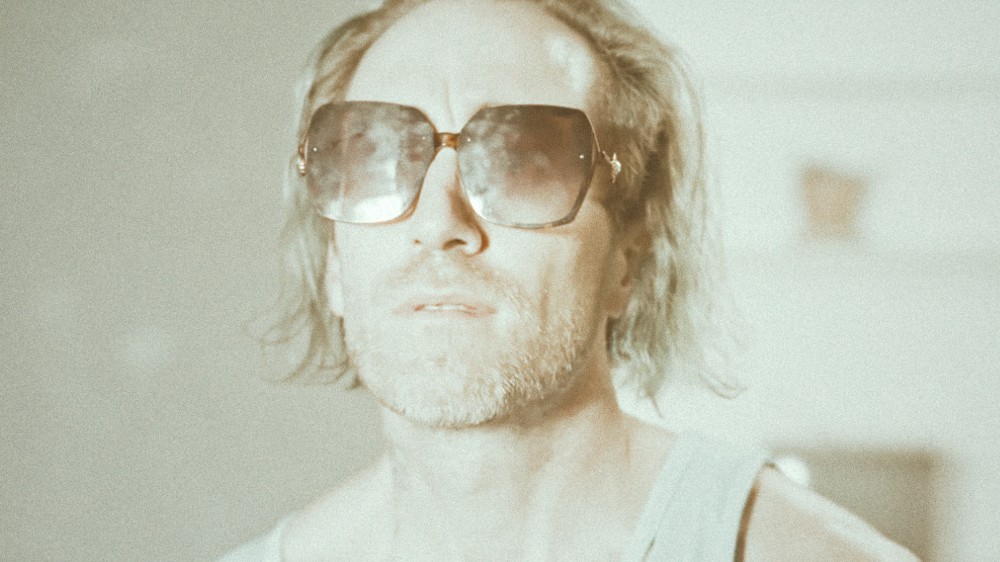
ATL: Everyone has phones now, so I assume parents are just always filming their kids.
Moorhead: I guess what I mean is you should film them talking, not just the picture of where you are, but film interactions with yourself and everybody around you. I’m still guilty of not doing that, because it’s strange to whip out a camera at a wedding or something, or I shouldn’t say wedding. That’s not strange. But hanging out with your family, and suddenly, you’re recording and they’re on camera — it’s invaluable.
ATL: At the Q&A earlier, you confirmed another thing I’d wondered — whether you made this movie in your actual apartments/complex. I guess one of you has a lot more furniture than the other one, or did you just find an empty apartment you could use in the complex?
Moorhead: I’d say Justin’s apartment had to be created. Justin’s apartment is the main apartment of the movie. That was something the poor guy had to live with for about a year as we were shooting, [and] then traveling, and then we had to come and do pickups and all of that. The walls got painted. That poor couch had to be moved in and out nonstop and all of that. That was a little bit more of a fabrication on the way that it looks than my apartment. What’s fun is, in my apartment, there’s a piece of art on the wall that is actually created by Tate [Ellington], who plays the cult leader in The Endless. Everything’s [from] our friends.
Benson: My apartment actually looked like that for a little over a year, because we shot most of it, [and then] went away. It looked like that for a long time. People would come over and just be like, ‘Why does this look like this? Why do you look like you’re living in…?’ How would we describe it?
ATL: Like a squatter? [laughter] During the end credits, when we see you making the movie, was it really just the two of you and one other person filming? Or did you film each other a lot?
Moorhead: Yeah, so, the in-person crew that was actually in the room for production — and COVID reasons — was myself, Justin, and David Lawson, our producer. For the most part, if Justin’s on camera, I’m operating it and vice versa, and Dave would run sound and everything else. It was a very collaborative process, but it’s also very important to note that often downstairs, in the courtyard, our art department, who would be working every day, would drop us off all the props and stuff that we would need. They were also the people [who] designed the closet and all of that. We did have a remote three-person art team as well, and I think that was the entire in-person crew, so it was very, very, very small.
ATL: Did you guys do your own cinematography on The Endless or any earlier movies?
Moorhead: Yes, this one, the crew was the three of us. We got a nice grip van that parked in the garage for a month and designed a lighting plan, and between shots, we would move lights around and all that.
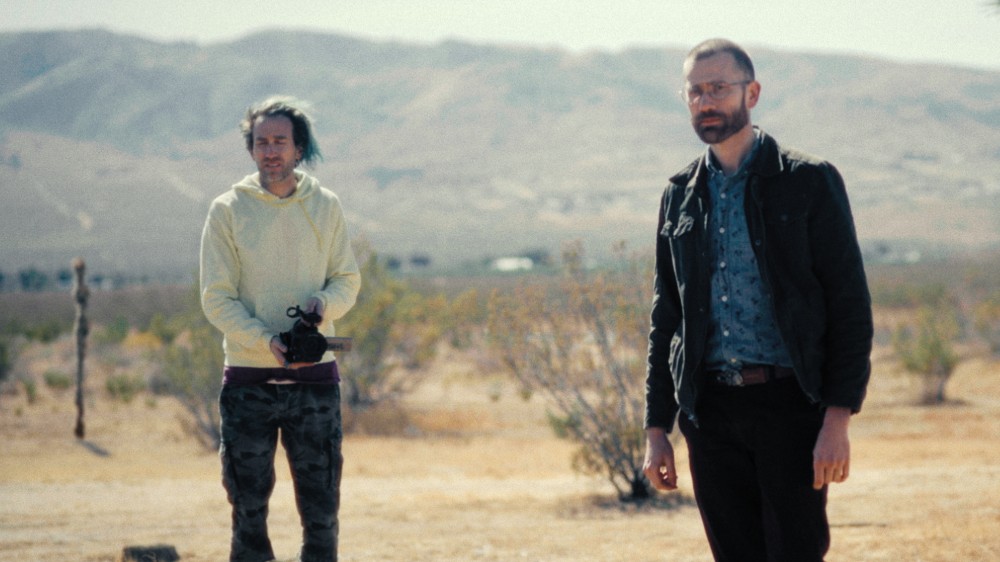
ATL: Was it just me, or do the film’s cinematography and other production values improve as the movie goes along?
Moorhead: That’s interesting. I don’t think there was anything intentional about that. There are definitely story reasons why it improves, but it’s more just circumstantial of having a structure to a film, probably, in terms of, ‘Oh, it becomes nighttime at certain points, and you can raise your contrast.’ What do you think?
Benson: Aaron has DP’ed all five of our indie features. This one [was] made in the most non-traditional way, production-wise. He didn’t have anyone [else]. He just had himself and our producer, David Lawson, just to tell us to do things sometimes, like, ‘Look out this window and help me put this light outside.’ It’s all him directing me and Dave [on] what to do. Put it this way, if he asked me to go be a gaffer on a movie, you’re literally threatening people’s lives. [laughter]
Moorhead: He’s downplaying how amazing his role was.
Benson: But with all those limitations [for Aaron] — I told you this before — but I think to me, it’s some of Aaron’s best work as a cinematographer. Especially with all those limitations, that’s so impressive.
Moorhead: [I’m] definitely proud of the work; I didn’t feel limited. I don’t think it would look very different if the film were different. If we shot it with a full crew, it would have been like, ‘Man, there’s too many people in this room.’
Benson: By the way, there’s some amazing work in there. Synchronic, for example. I think it’s just personal preference, but there’s something about how raw and how many happy accidents happened with that small of a production. There’s just something that happens when the production gets small, and when it goes well, that it’s just a personal preference, like, ‘Oh, that looks so cool.’
Moorhead: There’s a world where we could have gone all the way and embraced a full-blown Mumblecore aesthetic. It’s just not our style and never has been. Naturalism doesn’t necessarily have to be aesthetically pleasing.
ATL: What’s the writing process like between the two of you? Are you doing eight-hour days, five days a week, and writing the script until it’s done, or are you writing while doing all of these other things?
Benson: I think all of our movies [have] been the same thing, where we’ll spend several months — or in this case, 13 years — jotting down ideas, drawing ideas in a document, and going back and forth just brainstorming and getting everything out [that] we possibly can, [including] the general idea of what the story is going to be. Sometimes, there’s a beat sheet, and then usually, I’ll go off for two or three weeks.
Every day, I’ll wake up, have some tea and some breakfast, and just sit down and write for five or six hours, then go for a run or something, come back, [and] then kind of polish it up a little bit. Usually, after a few weeks, that first draft shakes out [and I’ll] go print it out and hand it to Aaron. Aaron takes it and notes it all up, and just jots down some more ideas. We kind of do that, usually, for around six rounds. Usually, that’s, like, our sweet spot, and we’ve had experiences on movies where when we go beyond that, those movies have been less well-received, oddly.
You should always develop, you should always polish, you should always rewrite. There are always tons of revisions [and] tons of drafts, but we’ve also discovered something that not a lot of people talk about — there is a point when you start over-developing, those projects tend to lose something. You lose this collective compass on something, in a bizarre way, at least for us. But it’s a very interesting thing. Luckily, over five movies, I think we’ve kind of figured out [when] it’s time to just go make it.
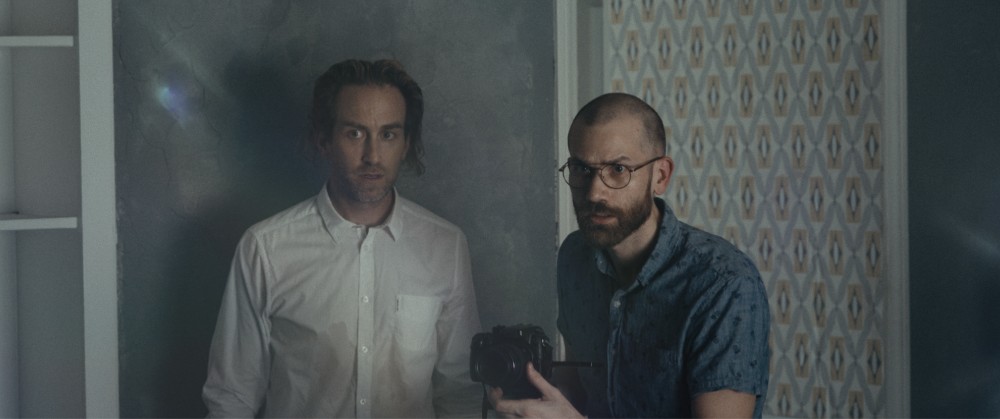
ATL: Let’s talk about your acting roles. When you’re writing stuff, knowing that you’ll have to perform those words, how easy is it for you, as actors, to memorize what can be fairly complex dialogue and ideas?
Moorhead: Our memorization process, let’s say [that] it doesn’t get any shorter because we’ve been developing or writing. I don’t find the fact that we wrote it any easier to memorize [it]. It’s still just kind of like, “Time to memorize,” and we sit down and do it until it’s in our heads. One thing that we do that isn’t consistent across the industry is we rehearse a lot, and we show up to the rehearsals already having the lines memorized. So, the memorization process is early, I guess is a way to say it, because there are people [who] will do it [later] or in the makeup chair in the morning. For us, our process is, once we’ve locked to a script, we make sure it stays locked, and we memorize even before rehearsals.
ATL: How long are you rehearsing and how long are you actually shooting? I get the impression since it’s the two of you, you can rehearse anytime in either one of your apartments.
Benson: Before any movie, we usually rehearse for about a month, and we usually do it just at our apartments. It’s kind of nice [that] we live upstairs and downstairs from each other, so it makes rehearsal easy. We also edit with a third editor, Michael Felker, but we do edit, and it also makes post-production a lot easier when you start to go upstairs or downstairs from the person to check out edits and work stuff out.
ATL: It’s interesting to see this movie and then compare or contrast it to the directing you’ve been doing on the Marvel TV shows, which are very structured studio projects, and even Synchronic, where you’re working with other actors. Is it easy for you guys to jump back and forth like that?
Moorhead: “Easy” isn’t the word I would use, but I’d say the only reason that makes it easy is it just occupies many, many hours of your life, both of them, and so it just makes you extremely busy. I wouldn’t say, for example, that the mindset [of], like, having to switch between the two, I don’t think that’s particularly tough.
Benson: No, in some ways, doing indies maybe, in some ways, is a higher pressure part of what we do as filmmakers, only because they’re so personal to us. There’s something about that, when you’re making it and you know that you’re going to attempt to present that out into the world. It’s that super high level of authorship, and there only being a small squad of us that do it, you can rightfully take it a lot more personally if the response isn’t great. There’s not a bad thing, but the voice in your head [saying “you] better get this right” is just a little louder.
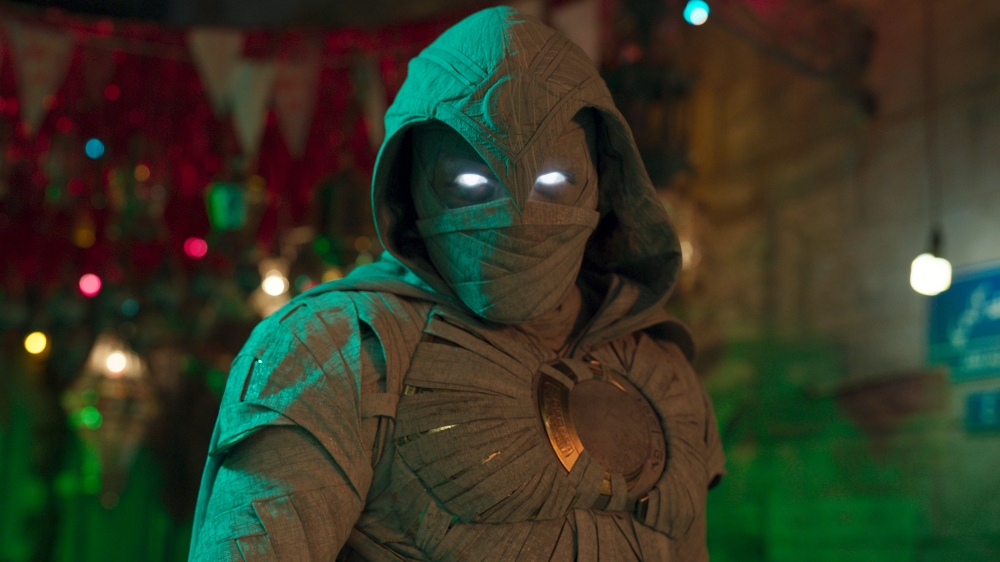
ATL: I’m sure there are some Moon Knight fans out there who are going to have their minds blown when they watch this movie and see your names on it.
Moorhead: That is genuinely one of the perks of being able to work as an independent filmmaker within the studio system — it exposes your work to a crowd that otherwise might not know. Maybe they just heard of Moon Knight or Loki or something, and hopefully, that’ll be enough for them to get curious. It’s not like it’s completely different from what we do. There’s definitely a difference, but we’re not doing broad comedy sitcoms.
Benson: Yet.
Moorhead: Yet… that’s the dream! Here we come. [laughter]
ATL: I spoke to Kasra [Farahani] and Christine [Wada] who worked on Loki. I was going to ask them about working with you guys on Season 2, and they couldn’t even say anything about that. Is it strange to be in that world where everything you do is a secret, and are you able to bring in some of the people you normally work with when you do those shows?
Moorhead: We’ve loved everybody that we’ve gotten to work with on all the TV shows we’ve been able to work on. However, we are, weirdly, often the last people that are brought on to the project, so we’ve never actually had a choice. That said, it’s also this wonderful learning experience where you get to work with people who otherwise might not have been on your radar. That’s just incredible, truly just a blessing, but there’s also a dream to bring a lot of the people [who] have helped us along with us. We just haven’t had much of an opportunity to do so yet.
ATL: Do you ever want to create your own series and serve as showrunners, which would allow you to direct some episodes and still get other directors involved, thereby paying it forward, in a sense?
Benson: It’s been our dream for, like, a decade. That’s a very difficult dream to achieve.
Moorhead: It’s way harder than one might think. It doesn’t quite matter what the resumé is. Every indie film is a miracle — every film is a miracle — but also every TV show. I don’t think it’s easy for anyone. I don’t think Ryan Murphy has it easy. Every greenlight is a battle of some kind. Every greenlight of any kind, there probably is a battle behind [it], not necessarily between enemies, but [there was] some kind of struggle.
ATL: What would you like people who see Something in the Dirt to take away from it and get out of the experience? While you were making it, did you hope to inspire people to question certain things, as the two protagonists do, or just blow their minds?
Benson: It’d be nice if people left the movie having discussions about the difference between speculation and belief. Just that conversation, the virtues of either one.
Moorhead: That is the thinking with the movie. It’s okay to be interested in things that don’t have necessarily a highly-scientific backing. It’s just when you dive down the rabbit hole and say that it’s true without firm proof, that’s where the problem comes in. I genuinely hope filmmakers get a lot out of this. I hope that people can sense that this is a movie just made with your friends and that is not only a valid way to make movies but often results in better work.
Something in the Dirt is now available to watch on VOD.


